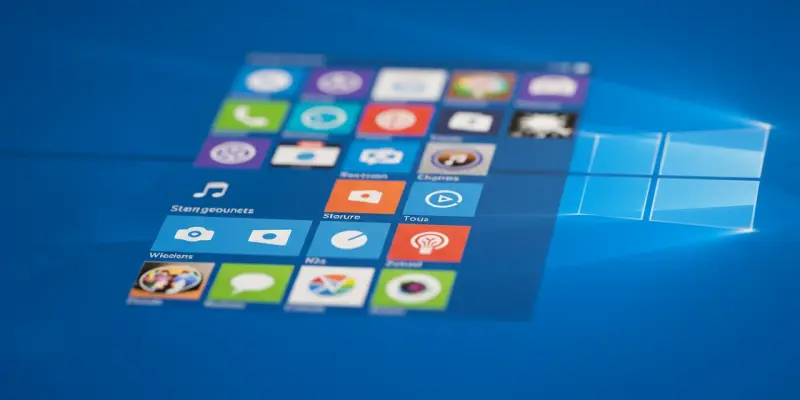Microsoft’s commitment to safeguarding its user community saw the recent rollout of a critical security update aimed at fortifying Windows 10 against various vulnerabilities. This update was designed to address more than 72 security vulnerabilities, including six critical zero-day flaws that posed immediate risks of exploitation by hackers. However, the earnest attempt to reinforce security inadvertently led to significant user distress, with situations unfolding across the globe where individuals found themselves locked out of their systems. Specifically, widespread issues such as encountering the BitLocker Recovery screen or the alarming Blue Screen of Death (BSOD) came to light, making everyday operations for thousands of users frustratingly unpredictable and disruptive.
BitLocker’s Role in Enterprise Security
Understanding BitLocker’s Functionality
BitLocker has long been heralded as a staple in data protection strategies, primarily serving enterprise environments with its robust full-disk encryption capabilities. It ensures that sensitive information is shielded from unauthorized access, a critical aspect for organizations that deal with sensitive data. Its integration with TPM (Trusted Platform Module) chips further strengthens its security proposition, making it a potent ally against data breaches that could otherwise result in severe consequences, such as regulatory penalties and reputational damage. Despite BitLocker’s effectiveness, its profile is not often highlighted in Windows editions targeting consumers, leading to a noticeable gap in user awareness.
Deployment and User Awareness
In corporate settings, BitLocker stands as a silent sentinel, often operational without user knowledge unless specific interactions are required. This invisibility on consumer-focused platforms results in a lack of awareness about BitLocker’s extensive security capabilities. In business environments, however, where data integrity is of paramount importance, BitLocker provides reassurance that sensitive corporate information remains secure from potential breaches, especially when devices are used outside secure office premises. Deploying such security measures is crucial for enterprises to mitigate the threats posed by stolen or lost laptops, ensuring that even if the physical device is compromised, the data remains undisturbed.
Microsoft’s Response to Update Challenges
Addressing User Concerns
Microsoft’s endeavor to thwart potential cyber threats through timely updates has faced challenges, as recently demonstrated. Following the release designed to patch critical vulnerabilities, a portion of devices faced accessibility issues, with end-user productivity taking a hit. In an effort to rectify these emerging challenges promptly, Microsoft undertook rigorous measures, initiating an emergency fix to address and resolve the complications arising from the previous update. This proactive approach underscores the perpetual challenge in cybersecurity: striking a delicate balance between urgent security interventions and ensuring seamless user experiences across all devices.
The Path Forward in Cybersecurity Maintenance
As technology continues to evolve, cybersecurity remains a moving target, demanding continuous vigilance and adaptation. Microsoft’s recent commitment to resolve update-related issues highlights a broader narrative within the industry, emphasizing the need for agile responses to unforeseen complications in software development. When updates inadvertently lead to accessibility constraints, it becomes imperative for industry leaders to prioritize transparency, offering users clear guidance and support. Furthermore, this scenario elucidates the necessity for maintaining open communication channels with users so that security measures bolster confidence rather than erode it through unexpected hitches.
Implications for Future Updates
Lessons from Current Challenges
The exploration of the recent update issues provides valuable insights into the broader dynamics of software security management. Among the key takeaways is the significance of preemptively identifying and addressing potential disruptions in functionality during rollout procedures. While the instinct to urgently patch vulnerabilities is understandable, these efforts must be paired with thorough impact assessments to ensure end-user experiences remain uninterrupted. Through strategic planning and meticulous execution, companies can learn from recent events—all part of the continuous endeavor to refine cybersecurity practices and foster user trust.
Striving for User-Centric Solutions
Microsoft recently demonstrated its dedication to user security with the deployment of a crucial update for Windows 10, intended to enhance protection against various vulnerabilities. This update aimed to rectify over 72 security issues, including six critical zero-day flaws that posed urgent threats of exploitation by malicious actors. Despite the good intention behind these enhancements, many users faced significant frustration and disruptions worldwide. Individuals reported being locked out of their systems, struggling with recurring visuals like the BitLocker Recovery screen or the dreaded Blue Screen of Death (BSOD). These problems made daily operations for thousands of users unexpectedly chaotic, leading to an unpredictable and challenging experience. Microsoft’s efforts to bolster security, while necessary, inadvertently contributed to widespread concerns and interference with regular computing tasks, underscoring the complexities involved in large-scale security upgrades.

